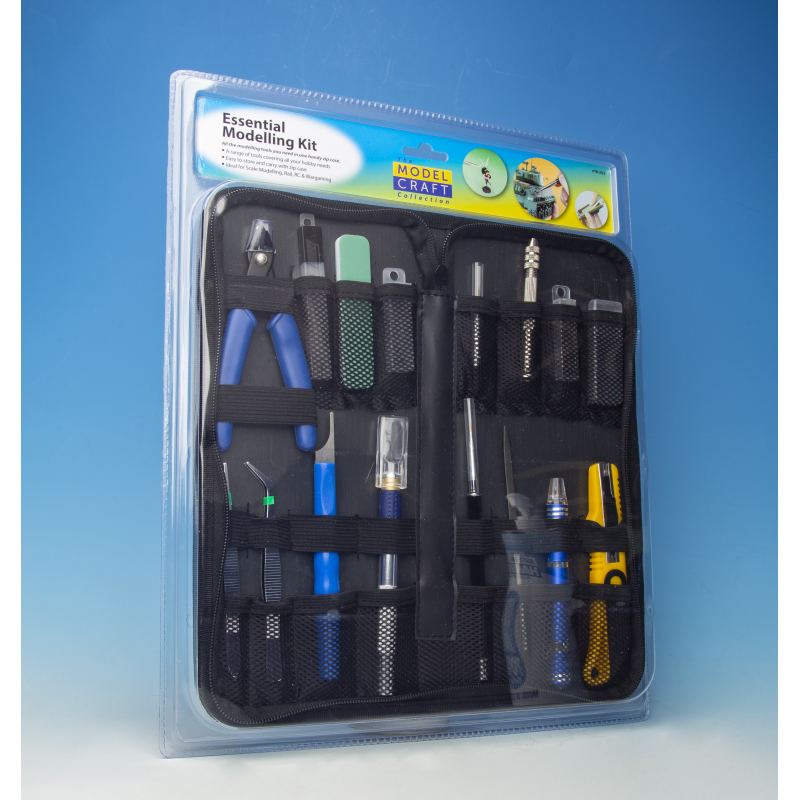
Building plastic models is an enjoyable and creative hobby that combines craftsmanship, attention to detail, and a love for historical or technical subjects. Whether you’re assembling WWII aircraft, modern tanks, or classic cars, having the right tools in your workspace is essential. The quality of your build often depends just as much on the tools you use as on the model kit itself.
Below is a practical breakdown of the most important tools every scale modeler should keep at hand. These tools will help you work with precision, reduce mistakes, and elevate the overall quality of your finished models.
1. Hobby knife
A sharp hobby knife (like the classic #11 X-Acto blade) is one of the most frequently used tools in scale modeling. It’s ideal for cutting parts off sprues, cleaning mold lines, trimming decals, and scribing panel lines. Always keep spare blades nearby—dull blades can damage parts and reduce precision.
2. Sprue cutters
Dedicated sprue cutters allow for clean, close cuts when removing parts from the sprue. Unlike standard side cutters or scissors, sprue cutters are designed specifically to prevent stress marks or part deformation. Look for flush-cutters for the best results, especially when working with fine or delicate parts.
3. Sanding sticks and files
After removing parts from the sprue, you’ll often be left with small nubs or seams. Sanding sticks (also called sanding sponges) and precision files help smooth these areas for a cleaner look. Use a variety of grits—from coarse for shaping to fine for polishing.
Sanding sponges conform to curved surfaces, which is useful when working on aircraft fuselages or car bodies.
4. Tweezers
When working with small parts like tank accessories, aerials, or cockpit details, tweezers provide the control needed to handle and place them accurately. A set of fine-point, angled, and flat tweezers is ideal. Avoid using your fingers—oils from your skin can interfere with glue or paint adhesion.
5. Plastic cement and cyanoacrylate glue (CA glue)
Plastic cement is perfect for most modeling tasks, as it melts and fuses plastic parts together. Thin cement with a precision applicator works great for seams and tight fits. For photo-etched parts or non-plastic materials, use cyanoacrylate (super glue). Keep a bottle of glue debonder on hand in case of accidents.
6. Paint brushes and airbrush
A range of paint brushes is essential for detail painting, especially for cockpits, engines, and camouflage patterns. For smooth and even finishes, many modelers prefer using an airbrush. While more of an investment, airbrushes offer superior control for large surfaces, shading, and weathering effects.
Make sure to have appropriate thinners, cleaning tools, and a moisture trap for your compressor if you go this route.
7. Masking tape and masking putty
Clean paint lines are key to a realistic model. Use modeler’s masking tape (like Tamiya tape) for sharp edges, and masking putty for soft-edged camo or complex shapes. Avoid standard household tape, as it can damage paint or leave residue.
8. Decal tools
Applying decals is a delicate process, and specialized tools can make a big difference. Use a soft brush, decal tweezers, and solutions like Micro Set and Micro Sol to help decals conform to panel lines and curved surfaces. A gloss coat before decaling is also essential for avoiding silvering.
9. Cutting mat
A self-healing cutting mat protects your work surface and extends the life of your blades. It also helps you cut accurately thanks to the grid and measurement markings.
10. Magnifier and good lighting
Fine details demand strong lighting and sometimes magnification. An LED desk lamp with a flexible neck ensures consistent illumination. For small parts and precise painting, a magnifying visor or headband loupe can be incredibly helpful.
11. Storage and organization
Keeping your tools, paints, and parts organized saves time and prevents mistakes. Use storage boxes, drawer organizers, or modular hobby tool stands to keep your workspace tidy and efficient. A clutter-free area makes the building process more enjoyable.
Building scale models becomes much more enjoyable and rewarding when your workspace is well-equipped. While it’s easy to start with just a knife and glue, expanding your toolset will open up more possibilities and improve your results.
If you’re looking to upgrade your modeling workspace or stock up on quality kits, paints, and accessories, check out ScaleCrafted.com. Their curated selection of tools and supplies is perfect for modelers focused on aircraft, tanks, and cars.
Whether you’re working on your first build or your fiftieth, having the right tools makes all the difference between frustration and satisfaction. Invest in the basics, build your skills, and let your creativity take flight.






